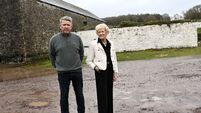European comet probe set to lift off
The European Space Agency’s ambitious mission to chase down a comet and land a probe on its surface was due to blast off today.
The €900m project, delayed by a year after a rocket exploded, was expected to launch from Esa’s Kourou spaceport in French Guiana at precisely 7.36am and 49 seconds.














